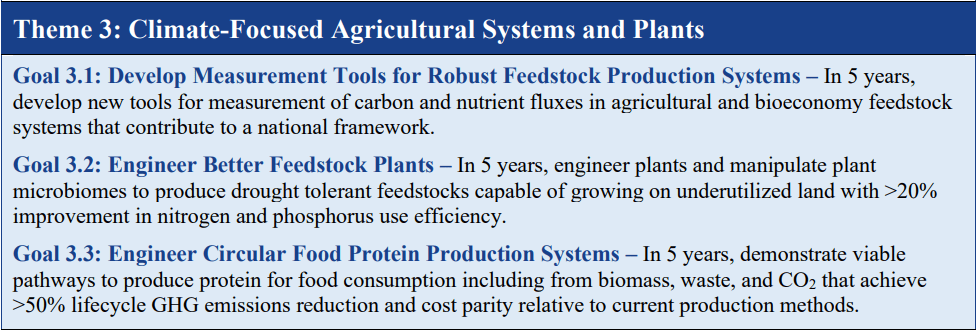On March 22, 2023, a briefing was released on the official White House website reporting that the Biden Administration had announced a new "bold goal" and "priority" for advancing U.S. homegrown biotechnology and biomanufacturing.
The briefing on the White House website says the initiative is a response to the Biotechnology and Biomanufacturing Initiative launched last year and is quite specific and detailed, divided into five blocks: "Addressing Climate Change," "Food and Agricultural Innovation," "Improving Supply Chain Resilience," "Advancing Human Health," and "Advancing Crosscutting Areas," covering 21 topics and 49 objectives.
Among them, there are 34 targets closely related to "biomanufacturing" and "synthetic biology", including all aspects of biobased product planning, supply chain innovation, scale up, gene editing and predictable design. Specific excerpts related to the biobased industry are as follows:
1 Addressing Climate Change

Topic 1: Fuel
Objective 1.1: Expand raw material availability
Over 20 years, collect and process 1.2 billion metric tons of dedicated plant and waste-derived feedstock that can be converted, and utilize more than 60 million tons of CO2 emissions for conversion to fuels and products, while minimizing emissions, water use, habitat conversion and other sustainability challenges.

Topic 2: Chemicals and Materials
Objective 2.1: Develop low-carbon chemicals and materials
Produce over 20 commercially viable bioproducts within 5 years with more than 70% reduction in life cycle greenhouse gas emissions compared to current production practices.
Objective 2.2: Promote a circular economy of materials
Within 20 years, demonstrate and deploy cost-effective and sustainable routes to convert bio-based feedstocks into recyclable design polymers that can replace more than 90% of today's plastics and other commercial polymers at scale.

Topic 4: CO2 Removal
Objective 4.2: Conversion to biomass through carbon removal and storage (BiCRS)
Demonstrate durable, scalable biomass CO2 conversion removal at less than $100/net metric ton over 9 years, with a goal of achieving 1 billion metric tons of removal.

